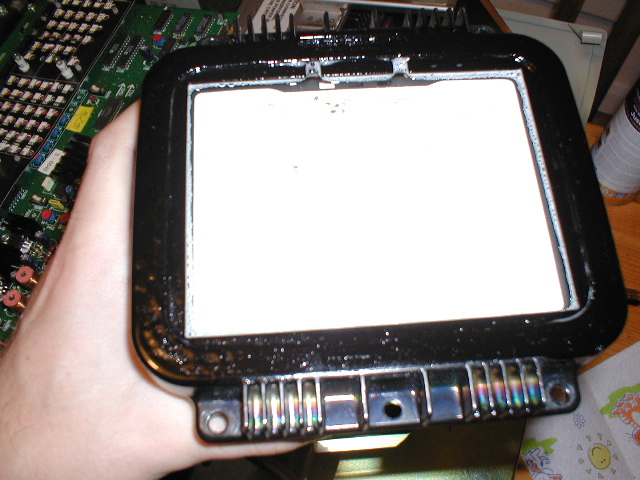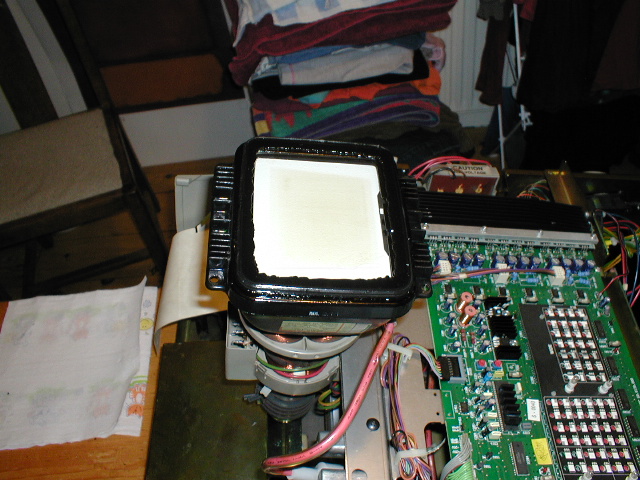Step 7:
Use a vacuum and a small flat ended screwdriver to get any stray bits of
sealant out of the housing. Spend some time on this or you'll end up with black
bits floating in the tube which may show up in the projected image (not good!).
Once you feel confident that you have cleared all the debris flush the tube
with either clean water or saturate it with glass cleaner and wipe dry. If the
tube is really wet let it dry out before attaching the glass plate.
Step 8:
We now use silicone sealant to re-attach the front glass plate.
You have various choices for the type of sealant to use here. Many have used
aquarium sealer with lots of success, others have had equal success with generic
25-35 year high heat high grade black silicone such as GE 100% silicone caulk
rated for high temperatures (400 degrees).
Prop the tube perfectly upright, such that it will not move at all. Run a
nice heavy bead around the tube frame, enough to cover most of the aluminum.

Note: We do not actually recommend putting the sealant of the glass plate
itself (as shown in the pictures below) as it’s impossible to be entirely sure
where the glass edge will land when you press it against the tube frame. This is
especially important if you like to maximize your phosphor usage (who doesn’t?)
by using the entire tube face, as any bead of silicone that protrudes a little
further into the 'face' area than the original silicone may block some of the
projected image.
Stick on the glass plate carefully pushing out any excess air and place a
small weight (a pound or two) on top. You should have had enough silicone come
out of the gap that there is a small amount of even spillover around the entire
tube. Inspect the tube before you even begin this whole process and you will see
how much spillover is done by the manufacturer.

Wait 24 hours (or whatever the sealant instructions say) for it to cure.
(Some even say to wait a full 7 days for it to cure since the chamber may be
under some pressure when heated up). Make sure to keep the tube perfectly
upright at least overnight so that the glass plate does not shift or slide.

|


